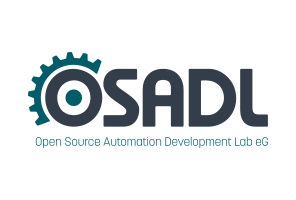Dates and Events:
|
OSADL Articles:
2023-11-12 12:00
Open Source License Obligations Checklists even better nowImport the checklists to other tools, create context diffs and merged lists
2022-07-11 12:00
Call for participation in phase #4 of Open Source OPC UA open62541 support projectLetter of Intent fulfills wish list from recent survey
2022-01-13 12:00
Phase #3 of OSADL project on OPC UA PubSub over TSN successfully completedAnother important milestone on the way to interoperable Open Source real-time Ethernet has been reached
2021-02-09 12:00
Open Source OPC UA PubSub over TSN project phase #3 launchedLetter of Intent with call for participation is now available |
Real Time Linux Workshops
1999 - 2000 - 2001 - 2002 - 2003 - 2004 - 2005 - 2006 - 2007 - 2008 - 2009 - 2010
Eighth Real-Time Linux Workshop on October 12 to 15, 2006, in Lanzhou, Gansu, P.R.China
Operating System Modifications for User-Oriented Addressing Model
Dong Zhou and Taoyu LiDepartment of Electronic Engineering, Tsinghua University
Tsinghua University, Beijing, 100084, P R China
zhoudªmails.tsinghua.edu.cn
overnitaryªgmail.com
Maoke Chen and Xing Li
Network Research Center, Tsinghua University
Tsinghua University, Beijing, 100084, P R China
(maoke,xing)@cernet.edu.cn
In both IPv4 and IPv6, IP address is assigned to interface and shared by different users on a same host. This model of addressing is not suitable for future Internet-based computing, where user-oriented accounting, behavior tracing, multi-homing and independent port usage must be supported. Because IPv6 provides a big enough space that everyone in the world can own several addresses, it is believed that a new, user-oriented IP addressing model will appear in the near future.
On the other hand, network protocol stacks in current operating systems are designed in the framework of interface-oriented addressing model. To specify a dedicated address to each individual user, the kernel must be modified so that one user can use only its own IP address, either for source or destination of a packet. Secondly, both user and IP address administration tools must contain a map from user ID to a group of address that the user having permission to apply them. Furthermore, the behavior of application programming interface must be modified in order that each user-mode network program binds address properly. Issues of compatibility and security are also discussed.




